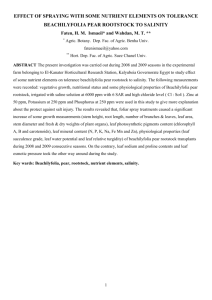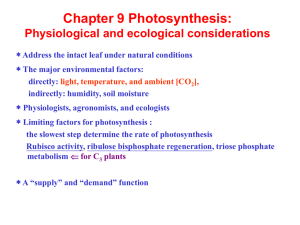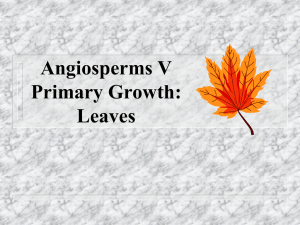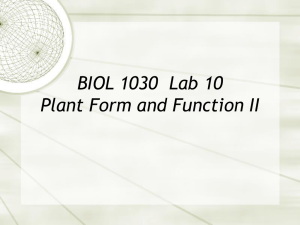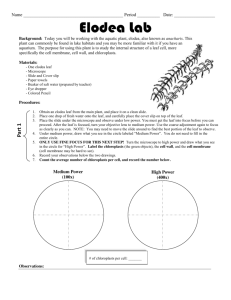click here and type title
advertisement
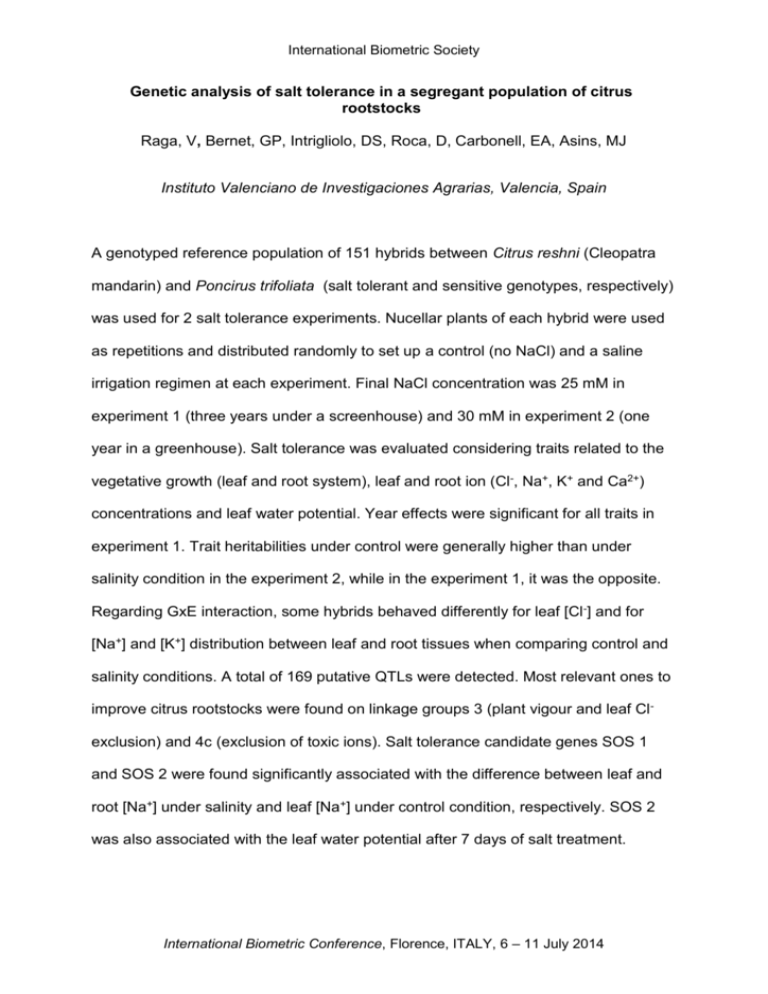
International Biometric Society Genetic analysis of salt tolerance in a segregant population of citrus rootstocks Raga, V, Bernet, GP, Intrigliolo, DS, Roca, D, Carbonell, EA, Asins, MJ Instituto Valenciano de Investigaciones Agrarias, Valencia, Spain A genotyped reference population of 151 hybrids between Citrus reshni (Cleopatra mandarin) and Poncirus trifoliata (salt tolerant and sensitive genotypes, respectively) was used for 2 salt tolerance experiments. Nucellar plants of each hybrid were used as repetitions and distributed randomly to set up a control (no NaCl) and a saline irrigation regimen at each experiment. Final NaCl concentration was 25 mM in experiment 1 (three years under a screenhouse) and 30 mM in experiment 2 (one year in a greenhouse). Salt tolerance was evaluated considering traits related to the vegetative growth (leaf and root system), leaf and root ion (Cl-, Na+, K+ and Ca2+) concentrations and leaf water potential. Year effects were significant for all traits in experiment 1. Trait heritabilities under control were generally higher than under salinity condition in the experiment 2, while in the experiment 1, it was the opposite. Regarding GxE interaction, some hybrids behaved differently for leaf [Cl -] and for [Na+] and [K+] distribution between leaf and root tissues when comparing control and salinity conditions. A total of 169 putative QTLs were detected. Most relevant ones to improve citrus rootstocks were found on linkage groups 3 (plant vigour and leaf Clexclusion) and 4c (exclusion of toxic ions). Salt tolerance candidate genes SOS 1 and SOS 2 were found significantly associated with the difference between leaf and root [Na+] under salinity and leaf [Na+] under control condition, respectively. SOS 2 was also associated with the leaf water potential after 7 days of salt treatment. International Biometric Conference, Florence, ITALY, 6 – 11 July 2014






